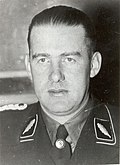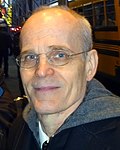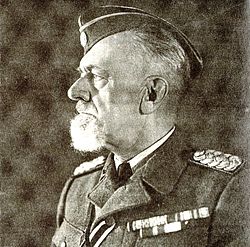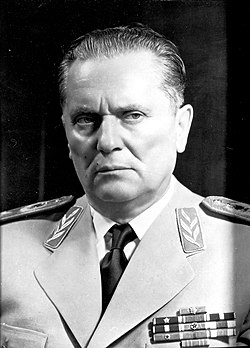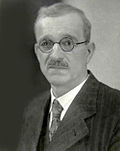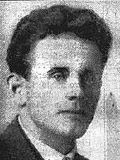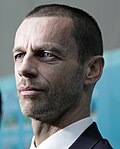- Vili Ameršek – football player
- Alenka Bikar – sprinter, Olympic athlete
- Valter Birsa (born 1986) – footballer
- Jaka Blažič (born 1990) – basketball player
- Andrej Urlep – basketball coach
- David Dedek – basketball coach
- Ante Šimundža – football coach
- Fredi Bobic (born 1971) – footballer of Slovenian descent
- Vinko Bogataj – ski jumper, featured in the Wide World of Sports Agony of Defeat video
- Nataša Bokal (born 1967) – skier
- Borut Božič – cyclist
- Janez Brajkovič – cyclist
- Primož Brezec (born 1979) – basketball player (NBA)
- Brigita Brezovac (born 1979) – IFBB professional bodybuilder
- Brigita Bukovec (born 1970) – athlete, Olympic athlete
- Anja Čarman – swimmer
- Jolanda Čeplak (born 1976) – Olympic athlete
- Miroslav Cerar (born 1939) – gymnast, Olympic athlete
- Iztok Čop (born 1972) – rower, Olympic athlete
- Alenka Cuderman (born 1961) – handball player, Olympic athlete
- Rudolf Cvetko (1880–1977) – fencer, Olympic athlete
- Ivo Daneu – basketball player
- Matjaž Debelak (born 1965) – ski jumper, Olympic athlete
- Rajmond Debevec (born 1963) – shooter, Olympic athlete
- Luka Dončić – basketball player, No. 3 overall pick in the 2018 NBA draft, NBA player for the Los Angeles Lakers [2] [3]
- Polona Dornik – basketball player, Olympic athlete
- Alenka Dovžan – alpine skier, Olympic athlete
- Goran Dragić – basketball player (NBA), Serbian father and Slovene mother [4]
- Zoran Dragić – basketball player (NBA), Serbian father and Slovene mother
- Ana Drev (born 1985) – alpine skier
- Vital Eiselt (born 1941) – basketball player
- Vesna Fabjan – cross-country skier
- Saša Farič – freestyle skier
- Maruša Ferk – alpine skier
- Jure Franko – alpine skier, Olympic athlete
- Damjan Fras – ski jumper, Olympic athlete
- Tim Gajser (born 1996) – motocross racer (MXGP)
- Janja Garnbret (born 1999) – rock climber
- Samir Handanovic (born 1984) – goalkeeper and football trainer
- Meta Hrovat (born 1998) – alpine skier
- Urška Hrovat – alpine skier, Olympic athlete
- Sait Idrizi (born 1990) – football player
- Sara Isaković (born 1988) – swimmer
- Milan Janša (born 1965) – rower
- Mima Jaušovec (born 1956) – female tennis player
- Simon Jecl (born 1986) – freestyle skier
- Andrej Jerman – alpine skier
- Marjan Kandus (born 1932) – basketball player
- Davo Karničar (born 1962) – alpine and extreme skier
- Srečko Katanec (born 1963) – football player and selector, Olympic athlete
- Peter Kauzer (born 1983) – slalom canoeist, Olympic athlete
- Jani Klemenčič (born 1971) – rower
- Anže Kopitar – NHL hockey player, Olympic athlete
- Jure Košir – alpine skier, Olympic athlete
- Žan Košir – snowboarder
- Katja Koren – alpine skier, Olympic athlete
- Primož Kozmus – hammer thrower, Olympic athlete
- Robert Kranjec – alpine ski jumper
- Žan Kranjec – alpine skier
- Rene Krhin (born 1990) – football player
- Bojan Križaj (born 1957) – alpine skier, Olympic athlete
- Miha Lokar (born 1935) – basketball player
- Petra Majdič – cross country skier, Olympic athlete
- Andreja Mali (born 1977) – biathlete
- Tina Maze – alpine skier
- Ariel McDonald – basketball player
- Miha Mevlja – football player
- Marko Milič – basketball player
- Sašo Mirjanič (1968–1994) – rower
- Matej Mohorič – cyclist
- Radoslav Nesterovič – basketball player (NBA)
- Bogdan Norčič – alpine ski jumper
- Branko Oblak (born 1947) – football player
- Jan Oblak – football player
- Bruno Parma (born 1941) – chess player
- Franci Petek – ski jumper, Olympic athlete
- Primož Peterka (born 1979) – ski jumper, Olympic athlete
- Borut Petrič (born 1961) – swimmer
- Darjan Petrič (born 1964) – swimmer
- Rok Petrovič (1966–1993) – alpine skier
- Vasja Pirc (1907–1980) – chess player
- Tadej Pogačar – cyclist
- Lucija Polavder (born 1984) – judoka, Olympic athlete
- Klemen Prepelič (born 1992) – basketball player
- Špela Pretnar – alpine skier
- Peter Prevc (born 1992) – ski jumper
- Josip Primožič (1900–1985) – gymnast, Olympic athlete
- Iztok Puc – handball player
- Alenka Cuderman (born 1961) – handball player, Olympic athlete
- Jure Robič (1965–2010) – marathon cyclist
- Primož Roglič – cyclist
- Mladen Rudonja – football player
- Benjamin Savšek – slalom canoeist, Olympic athlete
- Uroš Slokar – basketball player (NBA)
- Luka Špik (born 1979) – rower, Olympic athlete
- Andraž Šporar (born 1994) – football player
- Katarina Srebotnik – tennis player
- Elvis Stojko – figure skater
- Boris Strel – alpine skier, Olympic athlete
- Martin Strel (born 1954) – ultra marathon swimmer
- Ilka Štuhec (born 1990) – alpine skier
- Leon Štukelj (1898–1999) – gymnast, Olympic athlete
- Mateja Svet (born 1968) – alpine skier, Olympic athlete
- Miran Tepeš – ski jumper, Olympic athlete
- Tina Trstenjak – judoka, Olympic athlete
- Beno Udrih – basketball player (NBA)
- Primož Ulaga – ski jumper, Olympic athlete
- Tadej Valjavec – cyclist
- Andraž Vehovar – slalom canoeist, Olympic athlete
- Anamari Velenšek – judoka
- Benjamin Verbič – football player
- Peter Vilfan – basketball player
- Sasha Vujačić – basketball player (NBA), Serbian father and Slovene mother
- Zlatko Zahovič (born 1971) – football player
- Miha Zajc (born 1994) – football player
- Vasilij Žbogar (born 1975) – sailor, Olympic athlete
- Jure Zdovc – basketball player, Olympic athlete
- Tamara Zidanšek – tennis player
- Urška Žolnir (born 1981) – judoka, Olympic athlete
- Peter Žonta – alpine ski jumper
- Aljoša Žorga – basketball player
- Matjaž Zupan – alpine ski jumper, Olympic athlete
- Denis Žvegelj – rower, Olympic athlete
|
|
















